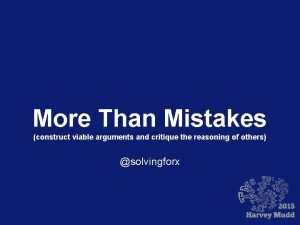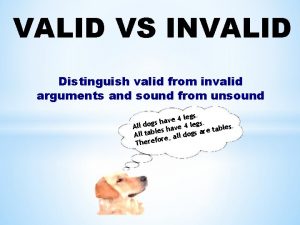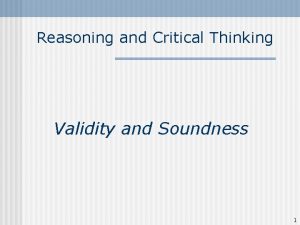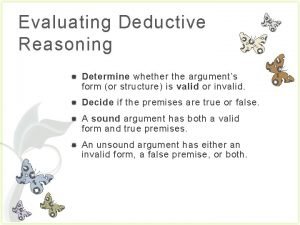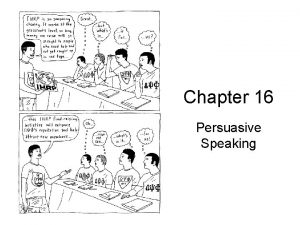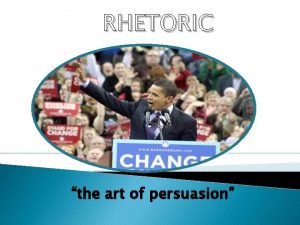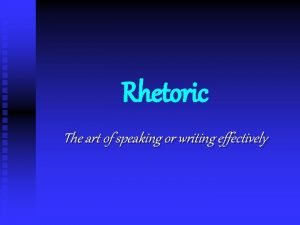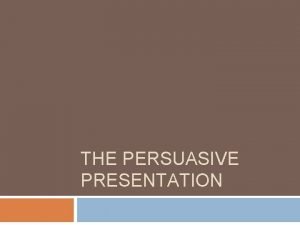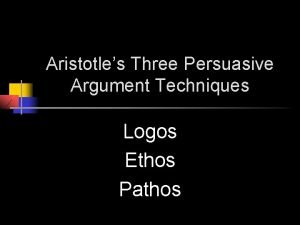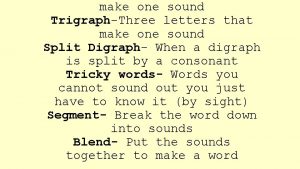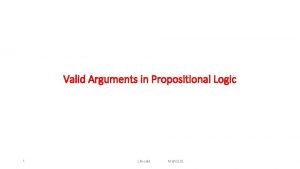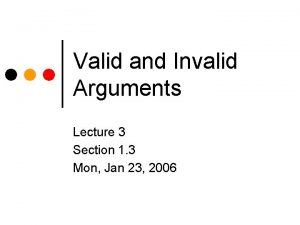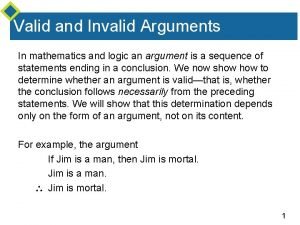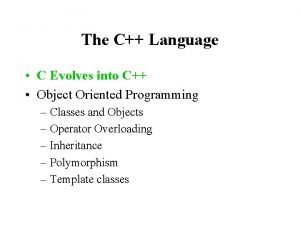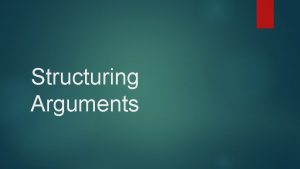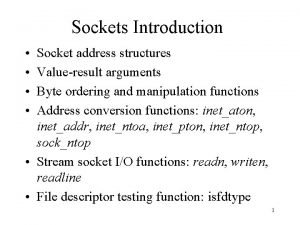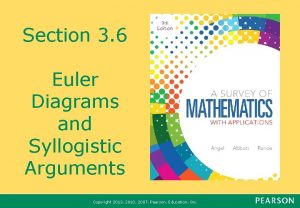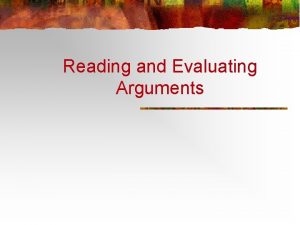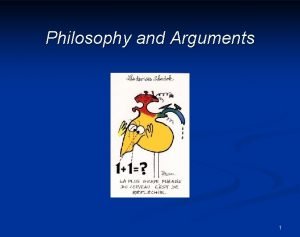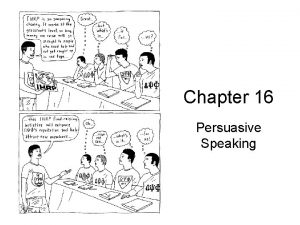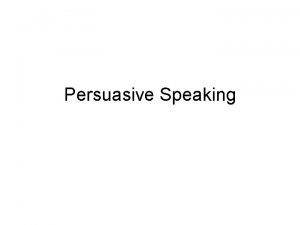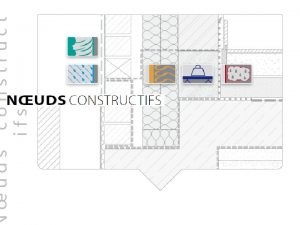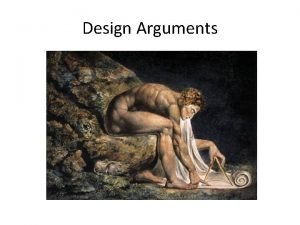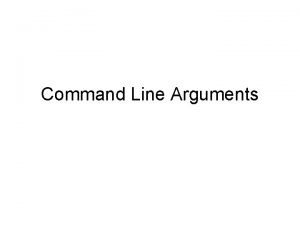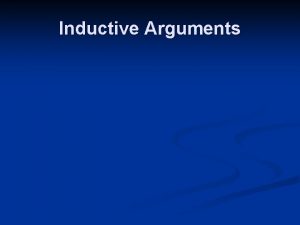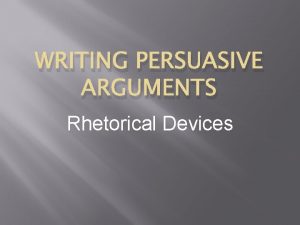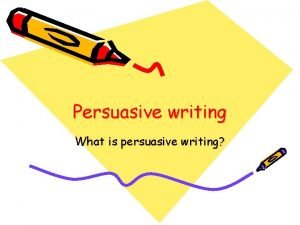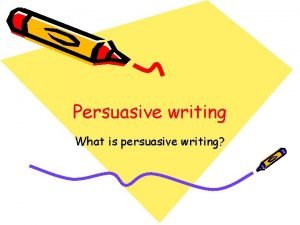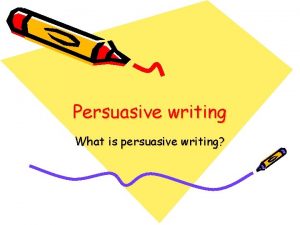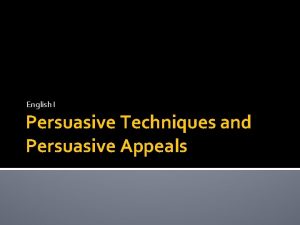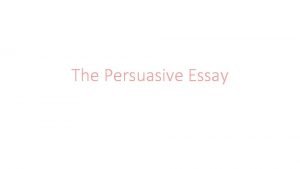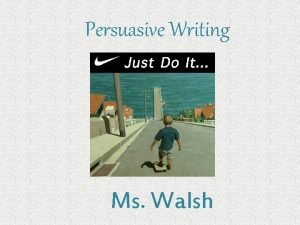Chapter 24 Persuasive Speaking Construct Sound Arguments Three




























- Slides: 28

Chapter 24: Persuasive Speaking

Construct Sound Arguments • Three elements to an argument 1. Claim or proposition (states your conclusion) 1. Based on evidence 2. Evidence (substantiates the claim) 3. Warrant (provides reasons evidence is valid)

Identify the Nature of Your Claims • Claim of fact • Declares something is true or will happen • Claim of value • Addresses issues of judgment • Claim of policy • Recommends a specific course of action

Use Convincing Evidence • External evidence • Examples, narratives, testimony, facts, statistics • Audience’s preexisting knowledge/opinions • Reaffirm listeners’ own attitudes, beliefs, values • Speaker expertise • Offer in conjunction with other evidence

Select Warrants • Motivational warrants • Appeals to audience’s needs and emotions • Based on pathos • Authoritative warrants • Appeals to source credibility • Based on ethos

Select Warrants (cont. ) • Substantive warrants • Uses factual evidence to justify argument • Based on logos • Two types: warrant by cause and warrant by analogy

Use Effective Reasoning • Drawing conclusions from evidence • Arguments using deductive reasoning • Begin with a general principle/case; • Offer a specific example; • Lead to the speaker’s conclusion.

Use Effective Reasoning (cont. ) • Inductive reasoning • Moves from specific case to general conclusion. • Speaker’s conclusion appears to be true. • Not necessarily true • Arguments can be strong or weak.

Use Effective Reasoning (cont. ) • Reasoning by analogy • Common form of inductive reasoning • Speaker compares two similar cases • Implies that what is true in one is true in the other • Causal reasoning • Claims one event/circumstance causes another

Remember the Call to Action • Include a call to action in the conclusion. • Tell the audience exactly what you want them to do. • Remind them of the benefits of taking action.

Counterarguments: Addressing the Other Side • One-sided message • Does not mention opposing claims • Two-sided message • Mentions opposing points of view • Sometimes refutes them • Generally more persuasive

Counterarguments: Addressing the Other Side (cont. ) • Ignoring opposing arguments might damage your credibility. • You don’t need to acknowledge/refute all counterarguments. • Raise/refute the most important counterclaims.

Avoid Fallacies in Reasoning • Logical fallacy • False/erroneous statements • Deceptive reasoning • Must be aware of them to • Avoid making them yourself; • Identify them in others’ speeches.

Types of Logical Fallacies • Begging the question • Argument that cannot be untrue • Lacks evidence to support it • Bandwagoning • Basing an argument on general opinion

Types of Logical Fallacies (cont. ) • Either-or fallacy • Presents only two possible alternatives • May be many additional alternatives • Ad hominem argument • Targets a person instead of the issue • Incites audience’s dislike of that person

Types of Logical Fallacies (cont. ) • Red herring • Relies on irrelevant premises • Hasty generalization • Bases general conclusion on isolated instance • Non sequitur (“does not follow”) • Reasoning and conclusion are unconnected

Types of Logical Fallacies (cont. ) • Slippery slope • Faulty assumption that one case will lead to a series of events or actions • Appeal to tradition • Suggests agreement because it is the way something has always been done

Strengthen Your Case with Organization • Problem-solution pattern • Used when discussing claims of policy • Two-point pattern • I. Problem (define what it is) • II. Solution (offer method for overcoming problem)

Strengthen Your Case with Organization (cont. ) • Problem-cause-solution pattern • I. Nature of the problem • II. Reasons for the problem • III. Proposed solution

Strengthen Your Case with Organization (cont. ) • Problem-cause-solution-feasibility pattern • • I. Nature of the problem II. Reasons for the problem III. Proposed solution IV. Evidence of solution’s feasibility

Strengthen Your Case with Organization (cont. ) • Monroe’s motivated sequence • I. Attention • Addresses listeners’ core concerns • II. Need • Isolates the issue to be addressed

Strengthen Your Case with Organization (cont. ) • Monroe’s motivated sequence (cont. ) • III. Satisfaction • Identifies the solution • IV. Visualization • Provides a vision of anticipated outcomes • V. Action • Asks audience members to act

Strengthen Your Case with Organization (cont. ) • Comparative advantage pattern • Used to show your proposal’s superiority • Best when audience agrees solution is needed • Make sure to identify familiar alternatives

Strengthen Your Case with Organization (cont. ) • Refutation pattern • • I. State the opposing position II. Describe why opposing claim is faulty III. Offer arguments/evidence for your position IV. Contrast your position with opposing claim

Examples and A 3 • http: //www. youtube. com/watch? v=Asa 3 fw. Qnx Rg • http: //www. youtube. com/watch? v=gz. Rgn. Dh. KU EY • https: //www. youtube. com/watch? v=dy. DGG 4 ZWp. E • https: //www. youtube. com/watch? v=Ww. WFXd Otbgs ***

Summary Questions • What are the various types of claims that can be posed in a persuasive speech? • What are some of the fallacies that can weaken an argument? • Why do you think Monroe’s organizational plan is called the motivated sequence? List some occasions when this pattern might be useful for giving persuasive speeches.

Persuasive Speech Assignment • See the learning web

Let’s Discuss our Test 1 • Next time: • No class next week (Spring Break) • Monday, March 21 we will cover chapters 16 and 17
 Construct viable arguments
Construct viable arguments Valid vs invalid arguments
Valid vs invalid arguments False premise example
False premise example Unsound argument
Unsound argument Examples of sound and unsound arguments
Examples of sound and unsound arguments Sound and unsound argument
Sound and unsound argument Chapter 16 persuasive speaking
Chapter 16 persuasive speaking Rhetoric: the art of persuasive writing and public speaking
Rhetoric: the art of persuasive writing and public speaking The art of speaking and writing
The art of speaking and writing What is powerpoint presentation
What is powerpoint presentation Rap lyrics on trial ethos pathos logos
Rap lyrics on trial ethos pathos logos “a sound mind is in a sound body”
“a sound mind is in a sound body” Sound is
Sound is Logos ethos, pathos
Logos ethos, pathos Three letters that make one sound
Three letters that make one sound Anger is at the root of most arguments and many fights.
Anger is at the root of most arguments and many fights. Example of emotivism
Example of emotivism Propositional logic
Propositional logic Invalid arguments examples
Invalid arguments examples Valid or invalid argument
Valid or invalid argument Default arguments
Default arguments Structuring arguments
Structuring arguments Value result arguments
Value result arguments Euler diagram arguments
Euler diagram arguments Arguments of evaluation
Arguments of evaluation Enthymeme
Enthymeme Ontological argument
Ontological argument Argumentsvalid
Argumentsvalid Ontological argument
Ontological argument
